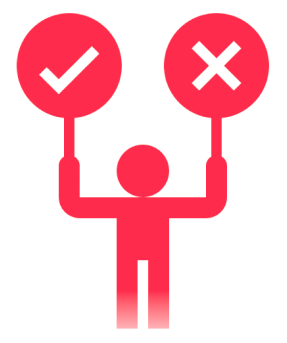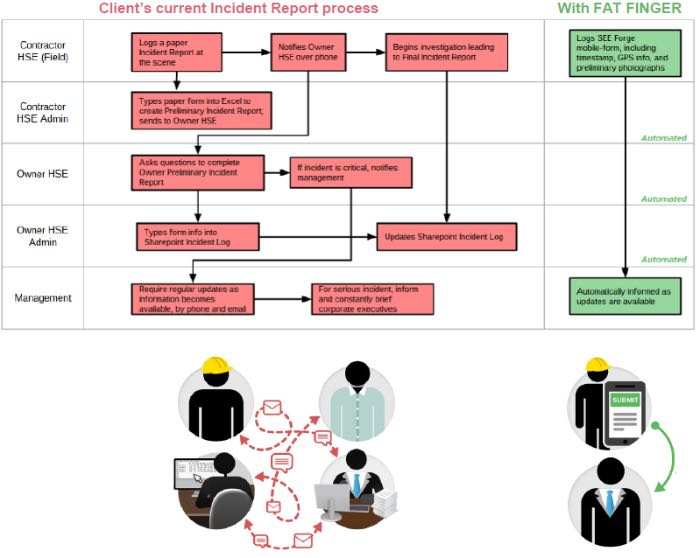Incident Reporting in the Workplace
Ensure a safe and secure workplace for you and your employees with our reliable digital workflows.
Trusted by companies all over the world







Before FAT FINGER
Non-compliance
Poor safety inspection tools can lead to non-compliance with regulatory standards, resulting in fines and accidents damaging the company’s reputation.
Poor-decision making
Paperwork can often be confusing and overwhelming, particularly with a large volume of data to be analyzed, making it difficult to determine which is relevant and which is not.
Safety insights in real-time
Every single piece of information captured by your FAT FINGER users will feed your company analytics in real-time. Adopting FAT FINGER will show you the risky points of your operations and how to make them risk-free.
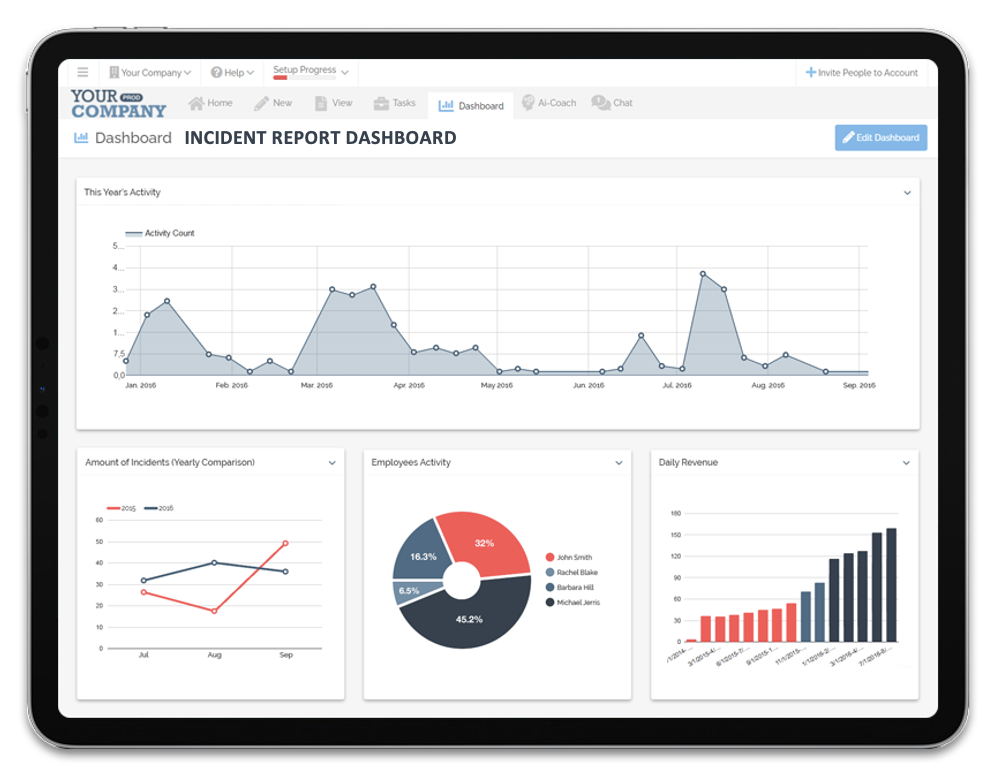
“The ability to file an incident report quickly and easily, and store it securely for future use or access is incredibly helpful.”
Kari Akers, COO
Build and customize your safety procedures in seconds
Every site has its own potential hazards. In FAT FINGER you will be able to import different safety processes and make them your own, or simply create one from scratch. And once you are done, you will be able to export your safety workflow to all of your different sites.
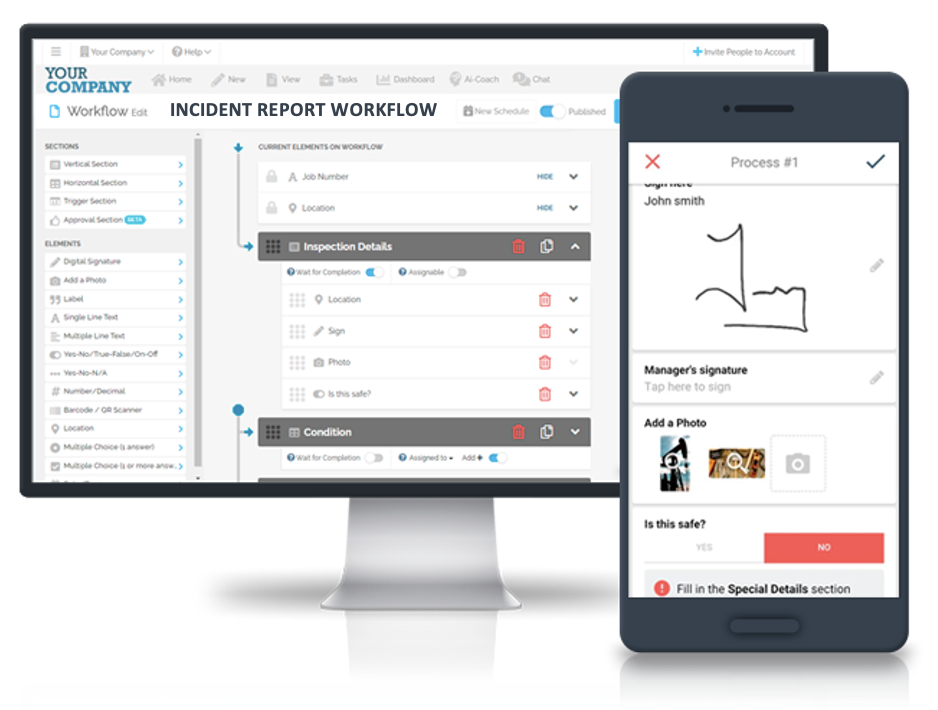
“There’s no need to worry about paper records getting lost or misplaced – everything is stored digitally right at your fingertips!”
Christopher Davis, Business Owner
FAT FINGER makes your company compliant
“No-Code” not “Low-Code” means anyone can turn challenges into profits. The only way to keep up with the speed at which the world moves today is to empower everyone from the front-line worker to the executive.

Transform your organization’s workplace safety in just a click
Safety hazard reporting made easy for everyone
We empower EVERYONE to initiate and create positive change to improve the company’s safety records. The only way to keep up with the speed at which the world moves today is to empower everyone from the front-line worker to the executive.
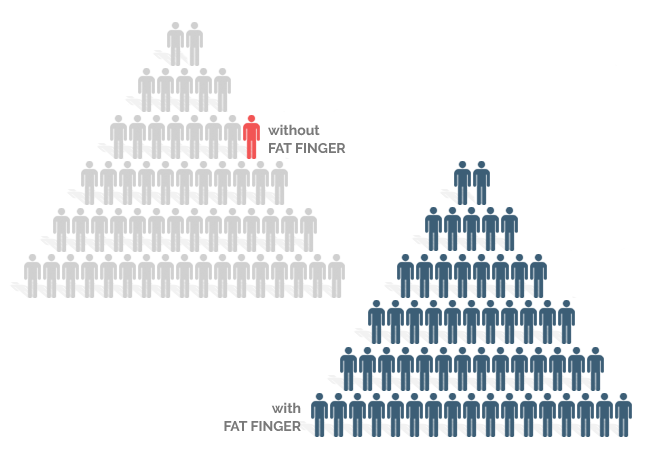
FAT FINGER gets you results in safety
Achieve guaranteed compliance, data-driven decisions, and increased productivity with FAT FINGER
38%
Fewer recorded incidents
97%
Feel in more control of their operations
7.28hrs
Reclaimed per procedure
44%
Improved procedure adherence. More data means more actionable insights!
3 Main Goals of Incident Reporting
Incident reporting is an important process that helps to ensure the safety of everyone in the workplace. Here are the 3 main goals why incident reporting is a must.
1. To document any incidents that occur in the workplace.
By documenting any incidents that occur, we can learn from our mistakes and make the workplace safer for everyone. Incident reports help us to identify trends and hazards so that we can take steps to prevent future accidents. They also provide a record of what happened in the event of an accident or injury, which can be used to investigate the incident and hold people accountable.

2. To identify potential hazards and prevent future accidents from occurring
Incident reporting is an essential tool for workplace safety. By tracking potential hazards and accidents, incident reports can help to prevent future accidents from occurring. In many cases, incident reports are the first step in identifying and addressing potential safety concerns. By alerting managers and safety personnel to potential risks, incident reports can help to make the workplace safer for everyone. In addition, incident reports can also be used to investigate accidents and determine what went wrong. By understanding the cause of an accident, steps can be taken to prevent it from happening again in the future.
3. To ensure workplace safety
Additionally, incident reports can help to improve communication between different departments within a company. For example, if a safety incident occurs in the production area, the incident report can be shared with the health and safety department so that they can investigate the incident and put preventive measures in place. In summary, incident reporting is a vital part of workplace safety and can help to improve communication and prevent accidents from happening again.
Types of Incidents that need to be reported
Non-fatal injuries to workers. / Non-fatal injuries to non-workers. / Work-related fatalities. / Dangerous occurrences. / Occupational diseases. / Exposure to carcinogens, mutagens, and biological agents. / Diseases offshore. / Gas-related injuries and hazards.
In general, there are three main types of incidents that should be reported: near misses, first aid incidents, and injuries. Near misses are incidents that have the potential to cause harm but don’t result in any injuries. First-aid incidents are those that require medical treatment but don’t require hospitalization. And finally, injuries are those that result in serious harm, such as a broken bone or a concussion.
When Do You Need to Report Incidents
If you witness an incident at work, it’s important to report it as soon as possible. By doing so, you can help prevent further injuries from occurring and ensure that the incident is properly investigated.
It is important to report any incidents that happen, as they can help to improve workplace safety. When deciding whether or not to file an incident report, there are a few things to consider:
Ask yourself if anyone was injured, think about whether the incident could have been prevented, and ask yourself if the incident is likely to happen again.
Transform your organization’s workplace safety in just a click
How to Write an Effective Incident Report
After knowing what are the types of incidents and when to report them, it’s time we tackle how we can write an effective incident report.

1. Collect all relevant information
Before writing an effective incident report, you need to collect all the relevant information. This includes the names of everyone involved, the date and time of the incident, and any damages that were caused.
2. Write a clear and concise summary
Once you have gathered all the relevant information, it’s time to write a summary of what happened. Your summary should be clear and concise and include all the key details of the incident. Be sure to mention who was involved, what happened, where it occurred, and when it took place. It’s also important to highlight any injuries that were sustained in the accident.
3. File the report in a safe location
Once you have written your report, be sure to file it in a safe location where it can be accessed if necessary. This will ensure that it is available if anyone needs to reference it later on.
Incident reports can be filed manually or digitally.
Manual filing involves writing the report by hand and filing it in a physical file folder. This can be a time-consuming process, especially if there are a lot of incident reports to file. It can also be difficult to find specific reports if they are not filed logically.
Digital filing involves creating and storing the report electronically. This can be done in several ways, such as through a secure cloud-based or electronic document management system. Digital filing is often seen as being more efficient than manual filing, as it allows reports to be accessed easily and quickly. It also helps to keep track of who has accessed the report and when.
FAT FINGER digital incident reporting is a system that allows users to file incident reports electronically. Reports can be filed quickly and easily, and they are stored in a secure location where they can be accessed if necessary. FAT FINGER also allows users to track who has accessed the report and when. This can be helpful for compliance purposes. Incident reports can be filed by anyone, anywhere, at any time.
To learn more about how to create a digital customized incident report through FAT FINGER, watch this video. Download the FAT FINGER app now and get started on writing your report.
Conclusion
Incident reporting is an important part of workplace safety. It helps to identify the causes of accidents and prevents them from happening again. By following proper procedures, you can ensure that all incidents are properly reported and investigated. This will help to improve workplace safety for everyone involved.
Do you need to report an incident?
FAT FINGER makes it easy for you to file an electronic incident report. You can do it quickly and easily, from anywhere in the world.
FAT FINGER will keep track of who has accessed the report and when, so you can be sure that your information is safe and secure.
Reporting an incident can be stressful, but with FAT FINGER, it doesn’t have to be. Our system is easy to use and helps take some of the pressure off. You can rest assured knowing that your report is in good hands.
Sign up for a free trial of FAT FINGER today.
About FAT FINGER:
Ensure front-line teams do their work correctly every time. Drag & drop digital procedures that unlock operational excellence.
In seconds anyone can build and deploy enterprise-grade mobile applications using an easy drag-and-drop no-code builder.
FAT FINGER uses machine learning to coach app users in real-time to make safer and improved decisions.
Try building your digital procedure on FAT FINGER for free @ www.fatfinger.io



